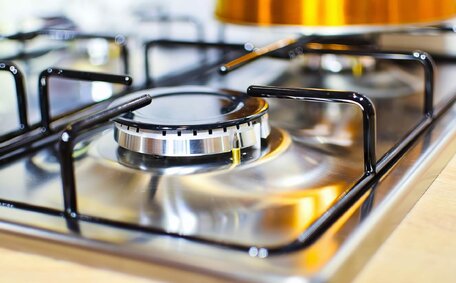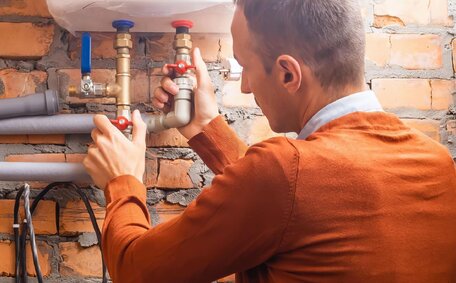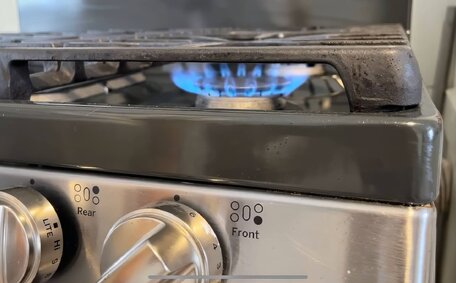Introduction to sewage backups
Sewage backups are a nightmare for homeowners, creating significant turmoil in Mascot and the greater Sydney region. When wastewater from your sewage system causes water to back up into your home through floor drains or toilets, it can cause extensive damage and create major health hazards. At Mascot Plumbing, our team understands the stress and disruption caused by a sewer backup.
With years of expertise, our team promptly identifies and addresses the causes of sewage backups, preventing additional flooding.
Sewer drain backups typically arise from blockages that pose a risk to your home’s plumbing.
Invasions by tree roots, grease accumulation, and pipe collapses or breaks are primary culprits behind sewage disruptions. Our skilled plumbers adeptly tackle sewage backup issues by clearing blockages, repairing damage, installing backflow prevention devices, and undertaking thorough cleanup and restorations.
Immediate response is vital to minimise harm when a sewage backup threatens to contaminate Mascot homes or businesses. We assist with regular sewer inspections, drain upkeep, pipe repairs, and sump pump installs to sustain your plumbing system’s integrity. Contact Mascot Plumbing immediately at the initial indicators of a slow drain or sewage smell - prompt action is essential.
Our 24/7 emergency plumbing service swiftly stops sewer backups and proactively addresses potential issues to protect your system.
Signs of a sewage backup
Recognising early warning signs of sewage backups, like unexpected water or foul smells, is essential to reduce damage and contamination.
The most obvious sign of a main sanitary sewer line clog is when water backs up into your basement or ground floor from floor drains or toilets. A backup might begin as a trickle, but can escalate to a flood of standing water mixed with raw sewage if not promptly addressed.
You may also notice gurgling sounds or see bubbles coming from toilet bowls when waste water is unable to properly drain down the pipes. Slow drains in sinks, bathtubs, and showers may signal potential blockages within your sewer system.
Perhaps the biggest giveaway of a backup in your main sewer line is the overpowering stench of sewage gas. This noxious odour is caused by methane and hydrogen sulphide gases that are unable to vent through clogged pipes. The smell is often most concentrated around your drain, particularly if it’s a floor drain.
If you observe any of these signs, understanding what to do when your sewer starts causing trouble is vital - take action immediately. Call a professional plumber to diagnose and clear the blockage before the flooding can spread further. Speed is critical to prevent the havoc that a sewage backup can cause, including structural damage, mold growth, and contamination that can damage your home and make it uninhabitable.
Causes of sewage backups
Tree Roots
Tree roots that infiltrate and clog sewer pipes are among the most common causes sewer backups occur. As roots grow, they can wedge their way into tiny cracks or gaps in old sewer pipes, eventually forming a dense root mass that blocks the flow of waste.
Pipe Damage
Damage to sewer pipes can also trigger backups when waste gets stuck at the broken point. Pipes can become compromised due to ground movement, corrosion, or accidental damage. Partial collapses and misaligned joints are other pipe defects that can catch debris passing through.
Heavy Rain
During periods of heavy rain or flooding, stormwater can surge through your sewer systems, causing backups or overflows. Excess stormwater seeping into cracked pipes through leaky joints is one issue. Municipal sewage treatment plants can also get overloaded, potentially leading to sewage backing up into your local collection lines and residences.
Grease Buildup
Fat, oil, and items not meant to go down toilet drains will solidify along pipe walls over time, causing blockages that may hinder water movement in your plumbing. As layers of grease accumulate, they restrict the diameter of pipes and inevitably cause a clog. Hair, food scraps and other debris stick to the grease, making the blockage worse.
Tree roots
Even small cracks or loose joints in ageing pipes provide an entry point for roots, which can quickly result in significant blockages. As they grow, roots expand and form a dense mat that traps waste and blocks flow.
Experts suggest that tree roots are responsible for over half of all sewer blockages. Homeowners should remain alert for potential root intrusions, particularly if trees are in the vicinity. Regular inspections and maintenance of your main sewer can prevent root-induced obstructions and backups.
Pipe damage
Pipe damage is another major cause of sewage backups. Cracks, breaks, misaligned joints, and partial collapses in sewer pipes can all lead to clogs and backups when items that shouldn’t be flushed toilet get trapped. Older pipes made from materials like clay and cast iron are especially prone to damage.
When your sewer pipes, especially those made of cast iron, become brittle and corroded over decades of use, backups are more likely to occur. Cracks form in the drain line, allowing roots and soil to infiltrate. Sections of pipe may break off completely, causing major gaps and misalignments.
Clay pipes may crack due to ground shifting and settling over time. Tree roots can then penetrate the cracks and expand, eventually breaking the pipe into pieces. Clay also erodes internally, developing rough surfaces that allow waste to snag and accumulate.
Replacing damaged sections of sewer pipe is the best way to resolve these issues before backups occur. At Mascot Plumbing, we use trenchless technology to repair or replace pipes with minimal landscape disruption. Regular drain inspections can also detect damage before it leads to clogs and overflows.
Heavy rain
In Mascot, residential and municipal sewer systems can be quickly overwhelmed by heavy or extended rainfall. Excess stormwater seeping into cracked pipes is one issue that leads to backups and overflows.
During heavy downpours, stormwater can be backing up into sewer lines through defective joints and broken pipes. This rapidly raises the flow level, leaving insufficient capacity for sewage drainage. Debris plugging dried cracks gets dislodged, contributing to clogs downstream.
Sewage treatment facilities may struggle with the increased volume during significant storm events. Excess water can cause sewer overflow that backs up into your neighbourhood’s collection lines and potentially into homes.
To avert rain-induced sewage backups, repair pipe cracks or breaches and install temporary barriers to channel stormwater away from residences. At the city level, sewer system maintenance and flow monitoring are key to preventing overloading.
Plumbers’ approach to handling sewage backups
Inspection and Diagnosis
When a customer calls with a sewage backup, our first priority is to arrive on-site quickly for inspection and diagnosis.
We’ll assess the backup’s extent and recommend measures to prevent future occurrences.
Stopping the Backup
The next urgent step is stopping any further backup as a compromised line can continue causing damage as quickly as possible.
We use high-power sewer jetting equipment to clear out tree roots, grease buildup and other debris causing sewer line backup. For partial collapses or major root infestations causing a clogged sewer, we may need to perform a sewer repair with a temporary bypass pump to divert sewage past the compromised section of pipe.
Cleaning and Sanitising
With the backup stopped, we focus on cleaning, decontamination and drying out the affected space. Our technicians use commercial-grade disinfectants and deodorisers to sanitise all surfaces, ensuring your air quality, including your HVAC system and other home areas, are safe from contaminants. With the backup stopped, we focus on cleaning, decontamination and drying out the affected space.
We’ll remove and responsibly dispose of any materials, including those from compromised drain lines that are saturated beyond salvage.
Long-Term Solutions
Installing cleanouts and backwater valves serves as a valuable preventive step against sewage backups. Regular maintenance with Mascot Plumbing can help you avoid severe sewage backups.
Inspection and diagnosis
When responding to a sewage backup, our first priority is conducting a thorough inspection and diagnosis. Our process begins by gathering details from the homeowner about the onset of the backup, impacted fixtures, and any early warning signs.
We visually inspect the property to determine how far the sewage has spread. We check floor drains, toilets, sinks, tubs, and basement areas for overflow.
Specialised camera equipment helps us pinpoint blockages and assess pipe conditions. It’s imperative to identify all system areas affected by the backup to halt the overflow.
An accurate diagnosis identifies the root cause and directs suitable interventions like pipe repairs or drain cleaning.
Efficiency and precision are vital in the inspection and diagnosis phase of our response. The faster we can pinpoint the issue, the quicker we can stop sewage flooding and prevent contamination. Our team has the advanced tools and experience needed to quickly uncover the source of any backup and provide effective sewer line service.
Inspection and diagnosis
Stopping the backup
Once a sewage backup is identified, plumbers will act swiftly to stop any further flooding. Speed is critical at this stage, as the faster the backup can be stopped, the less contamination and damage will occur.
The first step is to relieve pressure in the blocked sewer line. This may involve using specialised hydro-jetting equipment to clear partial clogs from tree roots, grease or debris in drains extending to your yard. For severe blockages, a bypass pump can be installed to divert sewage around the blocked section.
If the backup source is within the home’s lateral line or fixtures, a plumber will snake a drain cleaning cable down into sinks, toilets and drains to break up the clog. Attachments like mechanical augers on the cables cut through roots or remove grease buildup.
For total blockages that can’t be cleared internally, excavation of the sewer line may be required. The damaged section, whose faults can lead to further complications, is promptly located and either repaired or replaced. Temporary overground waste lines may be set up during excavation.
Once flows are restored, The plumber will ensure the clog is completely eliminated. They check that sewage is draining normally from all affected fixtures and floor drains before leaving the site. Stopping the backup promptly is critical to limit flooding damage and contamination.
Cleaning and sanitizing
Upon stopping the backup, our technicians undertake a meticulous cleaning and decontaminating process, with your family’s health and safety being the priority. We use commercial-grade disinfectants and deodorizers to sanitise all surfaces touched by sewage. Carpets, drywall, insulation and other porous materials saturated beyond salvage are removed and disposed of properly.
Our team takes great care to thoroughly clean and disinfect all floors, walls and fixtures impacted by the sewage backup. We extract any standing water and use truck-mounted drying equipment to fully dry out the space. Such measures guard against additional water damage and mould development.
For heavily contaminated areas, we may recommend mould remediation services to ensure your indoor air quality is restored. Our extensive experience with sewage cleanup means we follow proven methods to sanitise and deodorise your property after a backup. We can restore your home to a clean, healthy state so you can move forward after this disruption.
Long-term solutions
To prevent future sewage backups in Mascot, Sydney homes, several long-term solutions are recommended. The right preventative measures can protect against costly damage and health hazards.
Pipe Repair and Replacement
Inspecting and repairing damaged sewer pipes is key. Cracked, broken or root-infested pipes should be fully replaced. Regular drain cleaning and root cutting also help maintain flow.
Trenchless pipe lining is a minimally invasive option for restoring pipes without digging.
Backflow Prevention Valves
Installing backflow prevention devices, along with a sump pump, allows sewage to exit while blocking backups. Check valves on floor drains and overhead sewer vents protect your home by ensuring that when your sewer backs up, the flow is unidirectional, preventing a spill into your home. Exterior backflow valves shut when sewage backs up from the municipal sewer.
Sump Pumps
Sump pumps remove groundwater before it infiltrates and overwhelms pipes. They pump water away from the home’s foundation into storm drains or yards. Battery backups ensure continuous operation during power outages.
With preventative maintenance and equipment, homeowners can take charge of their plumbings health to avoid disastrous sewage flooding. Get in touch with Mascot Plumbing online for bespoke long-term solutions and professional expertise.
Conclusion
Sewage backups can be extremely disruptive and hazardous events for homeowners. As outlined in this article, there are several common causes of backups like pipe damage, tree roots, grease buildup and heavy rain. Recognising the signs that your sewer backs up early is critical to minimise flooding and contamination.
When a backup strikes, acting quickly to stop the overflow and properly clean up sewage is vital. Mascot Plumbing has the emergency response capabilities, equipment and expertise to address backups of all severities. Our goal is to not just address immediate issues but to also devise long-term preventative strategies to prevent future backups.
Homeowners concerned about plumbing problems leading to sewage backups are encouraged to reach out to Mascot Plumbing. Our team of qualified plumbers can inspect your drainage system, perform necessary repairs, and recommend installations like backflow valves and sump pumps. Proactive maintenance ensures that your home remains safeguarded, giving you peace of mind.






